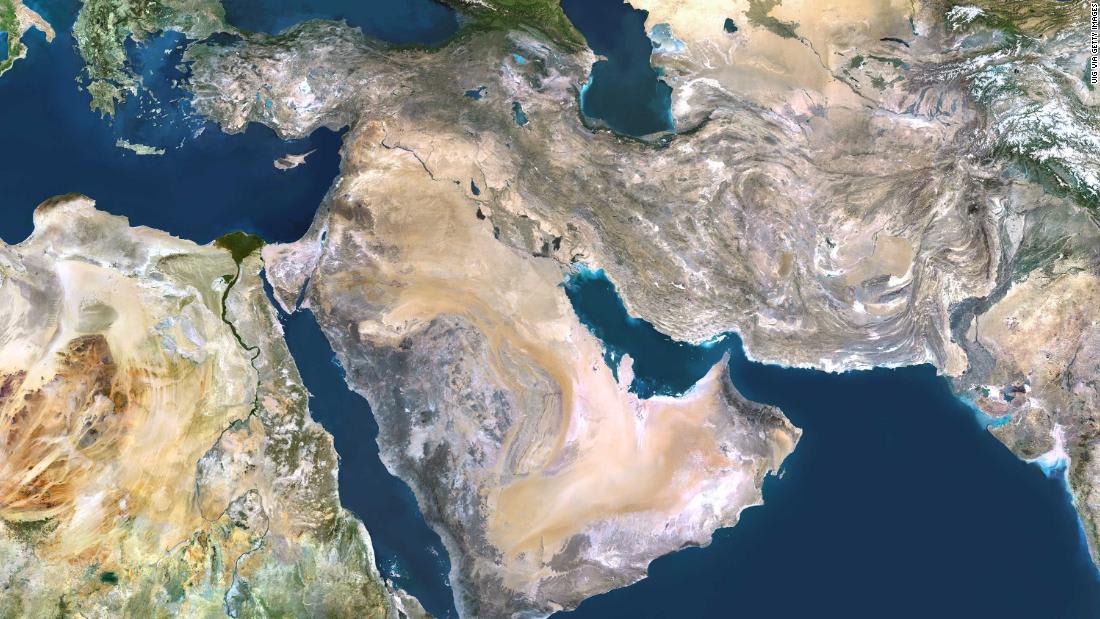دبي، الإمارات العربية المتحدة (CNN) -- تعتبر منطقة الشرق الأوسط وشمال أفريقيا من أكثر المناطق التي تعاني من ندرة المياه، إذ يعد 17 بلداً عربياً تحت خط الفقر المائي الذي حددته الأمم المتحدة.
وبحسب أحدث دراسات البنك الدولي، تسحب منطقة الشرق الأوسط كميات من المياه في المنطقة بشكل أسرع مما يمكن إعادة تجديده، ما يعني أن دول منطقة الشرق الأوسط وشمال أفريقيا هي في الأساس تتخطى إمكانياتها.
كما قدم التقرير أيضاً حلولاً ممكنة لتخطي ندرة المياه التي تعاني منها المنطقة والانتقال إلى فترة من الأمن المائي.
وكشفت البحوث أن على منطقة الشرق الأوسط، التي تعتبر موطناً لنسبة 6 بالمائة من سكان العالم، اتخاذ الإجراءات الحاسمة لتضييق الفجوة بين إمدادات المياه والطلب عليها.
وساهمت عدة مقومات في التأثير على إمدادات المياه في المنطقة، حيث أدى النمو السكاني والاقتصادي، وتغير المناخ، وإمدادات المياه المشتركة عبر الحدود دوراً كبيراً في إمدادات المياه في المنطقة.
وتعاني البلدان من ندرة المياه المطلقة عندما تنخفض إمداداتها المائية السنوية من المصادر الطبيعية إلى أقل من 500 متر للشخص الواحد.
ووفقاً لتقرير البنك الدولي، تحدث عملية الاستخدام غير المستدام للمياه في المناطق التي تؤخذ فيها المياه من الأنهار، والطبقات الجوفية بمعدل أسرع من الأمطار التي يتم تجديدها.
وفي هذا السياق، قالت المديرة العامة للمعهد الدولي لإدارة المياه، كلوديا سادوف، لـ" CNN": "عندما تسحب كمية من الماء أكثر من الكمية التي تم تجديدها، فإنك تحطّم الطبقة الصخرية نفسها، مما يضر بالنظام البيئي الذي تعتمد عليه، ويعطل الإنتاج الاقتصادي، ورفاهية الأسرة".
ومن الطرق الشائعة التي تتبعها بعض دول الشرق الأوسط لتكملة إمدادات المياه غير الكافية هي عملية تحلية مياه البحر، حيث تستحوذ منطقة الشرق الأوسط وشمال أفريقيا على ما يقارب نصف طاقة التحلية في العالم، بحسب ما يشير البنك الدولي.
وتمارس عملية تحلية المياه في 150 دولة حول العالم، كما تقدر الجمعية الدولية لتحلية المياه (IDA) أن أكثر من 300 مليون شخص في جميع أنحاء العالم يعتمدون على المياه المحلاة لبعض أو كل احتياجاتهم اليومية.
ورغم أن تحلية المياه هي من الطرق الشائعة المتبعة في المنطقة، إلا أنها تتمتع ببصمة كربونية كبيرة، كونها تعتمد على محطات تحلية مياه كثيفة الطاقة وتستخدم الوقود الأحفوري لتوليد الحرارة.
وإضافة إلى ذلك، تلقى المواد الكيميائية والماء الملحي المشبع بالملح، الناتج عن العملية، في البحر مما يتسبب بضرر على النظم البيئية البحرية.
وللتعويض عن التكلفة البيئية، تقوم العديد من المشاريع الطموحة في المنطقة بتجربة تحلية المياه بالطاقة الشمسية، والتحلية بالتناضح العكسي، التي تعتبر أقل استهلاكًا للطاقة من خلال فصل الملح من الماء.
وفي هذا السياق، تقول أمينة عام المؤسسة الدولية للتنمية، شانون مكارثي، إنها "متفائلة بأن الطاقة المتجددة ستجعل العملية أرخص".
ورغم أن مناطق عديدة في الشرق الأوسط تستطيع تأمين ثمن عمليات تحلية المياه، إلا أنها ليست طريقة ممكنة في العديد من المناطق الفقيرة التي مازالت تعتمد على المياه الجوفية.
ومن المتوقع، أن تؤدي ضغوطات السكان والنمو الاقتصادي وتغير المناخ إلى زيادة التوتر المائي في منطقة الشرق الأوسط وشمال أفريقيا، إذ يشير تقرير البنك الدولي إلى أن هذا "سيزيد من التنافس على الموارد المائية المشتركة عبر الحدود، ويزيد بدوره من حدة التوترات السياسية."

